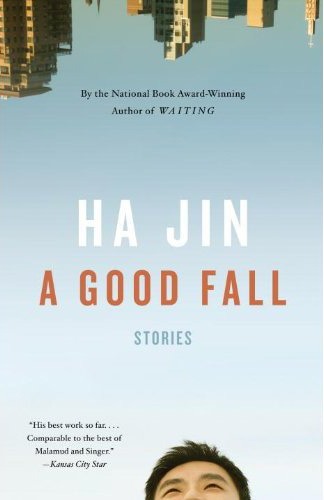
As a Chinese American novelist, I tend to resist treating literature as sociological texts. I’ve answered my share of those questions: What does your book tell us about China/China versus America/Asian American women/immigrant families/etc.? And while I always appreciate the intent behind those queries (truly!), I try not to impose that framework on other authors, particularly when their characters are people of color, female, working-class, or otherwise “other.” I don’t want their creations to carry the burden of being representative. I want to let them live and breathe, to simply showcase the art of a writer.
But this week, as I started to read Ha Jin’s A Good Fall, I found myself unable to stop taking mental notes on what this book reveals about the neighborhood of Flushing. Of course, it’s become almost compulsory for the Timesand New York magazine to rhapsodize over Flushing restaurants—often with a Columbus-style tone of discovery. But A Good Fall is the first book I’ve read that delves straight into the inner lives of its inhabitants, a group so often invisible in mainstream culture, not to mention literature, that I can completely understand the temptation for readers—myself included—to view these stories as sociological documents.
All of Ha Jin’s characters are recent Chinese immigrants: a sushi restaurant waitress whose sister in Sichuan harasses her to send money so that she can buy a car; a male sweatshop worker who becomes a driver for three prostitutes; an English professor who has a nervous breakdown when he signs off his tenure application letter with “Respectly yours”; a young monk left penniless and undocumented by his temple master, who secretly keeps a wife and a BMW on Long Island.
As I read their stories, as much as I’m admiring Ha Jin’s surprising turns of phrase, the sympathy and insight he extends to even minor characters, the plain honesty of every detail and feeling, it’s almost impossible not to draw conclusions about the hopes and struggles of the population his characters seem to embody—which I’ll explore in more detail in a following post.
For today, I wanted to explore a reaction that seems still more primal—maybe even primitive. I grew up in Flushing, and I have to admit that my first, most basic reaction to the book went something like, Hey, Taipan Café on Roosevelt Avenue—I know that place! Obviously, I’m not the only individual who has sampled Taipan’s coconut tarts and pork buns. But for those of us who’ve grown accustomed to rarely seeing our worlds depicted in print, there’s a deeply personal quality to that jolt of recognition, almost as if the author is directing that reference straight at us.
I often felt like Ha Jin’s characters were taking me on a tour of my hometown. In “A Composer and his Parakeets,” a composer buys millet for his absent lover’s bird at Hong Kong Supermarket, where my family often buys groceries, mostly because of the free parking. In “Choice,” a tutor and his student’s mother begin a romance outside a hotpot restaurant named Little Lamb, which I’ve passed by wistfully but have never tried because the rest of my family can’t stand lamb. In “The Beauty,” a jealous husband picks up the World Journal at the Chung Hwa Bookstore, where I spent many bored hours as a child with my grandmother. The same husband later finds himself on a gurney in Flushing Hospital, where my mother gave birth to me and my sisters. I could go on and on.
The truth is, while this way of digesting a book might not be very literary, it’s often a powerful pleasure for readers and a formative experience for writers. The Nigerian writer Chinua Achebe has spoken of how his early attempts at writing were stymied by his sense that only the English countryside was a setting fit for literature. The Caribbean poet Derek Walcott once betrayed the anxiety of trying to emulate the canon, whereas Omeros is a landmark achievement in depicting his native island of St. Lucia as a place as worthy of an epic poem as the worlds of Homer and Odysseus.
When I was a little kid, I wrote my share of stories about golden-tressed, green-eyed girls named Vanessa and Crystal. And while I’ve come a long way since then, I still remember the first time I workshopped a story that described a check-cashing store on Kissena Boulevard.
Maybe political dangers will always lurk in imposing a sociological framework on works of literature. But maybe that impulse, at heart, arises from a basic pleasure of reading: finding the foreign in the familiar and the familiar in the foreign.
I’d love to hear from readers: Have you seen other literary depictions of Flushing? Of your own neighborhood? What works of fiction have given you that jolt of self-recognition?
Originally published at Open CIty: Blogging for Urban Change
